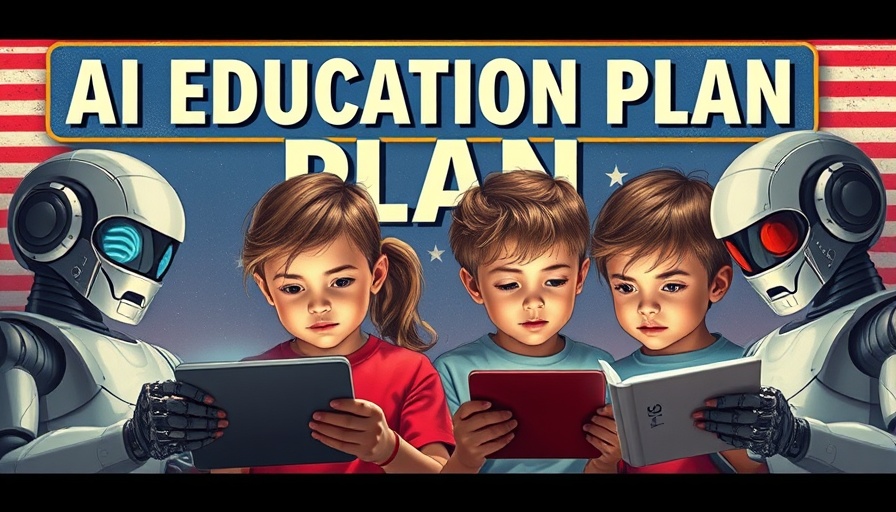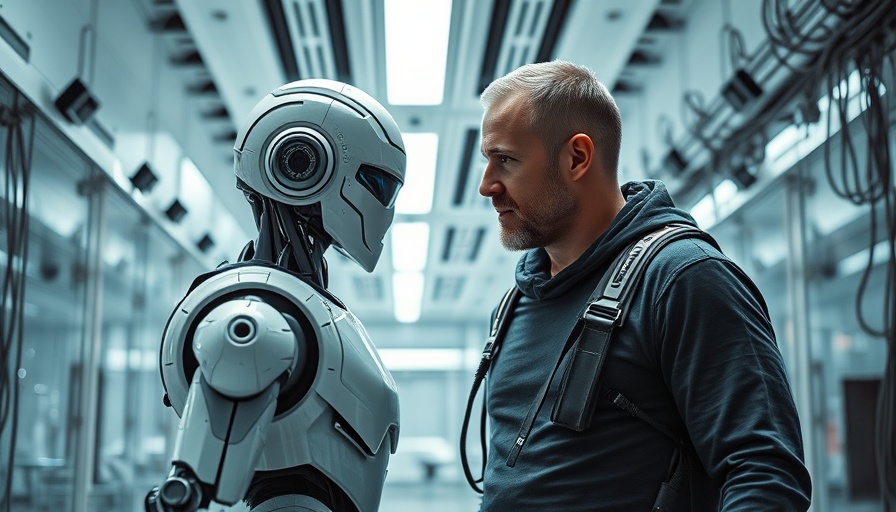
Unpacking Trump's New AI Education Initiative
In a surprising move, President Trump has signed an executive order designed to enhance AI education across the United States. This initiative aims to equip the next generation with the skills needed to thrive in an AI-centric future. According to a White House fact sheet, "AI is rapidly transforming the modern world, driving innovation, enhancing productivity, and reshaping how we live and work." The government's focus on training young Americans in AI is less about keeping pace and more about regaining a competitive edge in a world where nations like China are making significant strides in similar educational endeavours.
In 'Trump's AI Education Plan,' the discussion dives into the importance of preparing America’s youth for an AI-driven future, exploring key insights that sparked deeper analysis on our end.
Understanding the Task Force on AI Education
The order establishes a dedicated task force focused on AI education, led by the director of the Office of Science and Technology Policy. The committee is multidisciplinary, involving secretaries from various sectors, including Education and Labor, to bridge efforts across different fronts. By prioritizing early exposure to AI, the initiative intends to demystify this advanced technology, thus preparing students for dynamic roles in future job markets. The creation of the Presidential Artificial Intelligence Challenge, aimed at fostering student and educator accomplishments in AI, is an essential part of this strategy.
Navigating Investor Influence and Economic Realities
Trump's executive order also reflects a broader recognition that the U.S. must actively invest in its workforce to harness AI's transformative potential. With projections forecasting that companies like OpenAI could achieve $125 billion in revenue by 2029, the urgency to develop talent and technological literacy has never been greater. As noted in the briefing, failure to invest now could derail potential advances in productivity and economic growth. OpenAI's forecast illustrates how critical it is for businesses to align with educational initiatives that prepare future employees for high-demand roles in AI.
Global Context: Comparisons with China's Approach
Amidst these developments, one cannot ignore the pressure exerted by China's aggressive AI educational policies. With provinces across the nation reportedly introducing mandatory AI education frameworks at all educational levels, the U.S. risks falling behind if not proactive. This competition is not only about technological advancement but also about global leadership in innovation and education. By comprehensively addressing AI in K-12 education, the U.S. can harness its historical strengths in innovation while also aligning with future workforce needs.
Benefits of AI Education for Future Leaders
One of the most significant aspects of the executive order is the emphasis on preparing students to be confident users and creators of AI technology. AI education in schools could potentiate a workforce filled with individuals who are not merely passive consumers of technology but active developers and innovators. As AI becomes integral to various industries, understanding it from an early age could elevate productivity, drive innovations, and make students excessively competitive in the workforce.
The Path Ahead: What Businesses Should Do
For business owners, the implications of this executive order are manifold. The move towards AI literacy reflects a shift in how future employees will be trained. As businesses look to expand their operations within an AI framework, understanding these educational changes will be crucial. Companies should also consider investing in their own employee training programs that align with the skills taught in schools. This dual approach not only enhances workforce readiness but establishes a basis for future collaborations with educational institutions. Ultimately, businesses that leverage AI now stand to benefit immensely from this shifting paradigm.
START USING AI NOW to enhance your business strategies and prepare for the future workforce!
 Add Row
Add Row  Add
Add 




Write A Comment